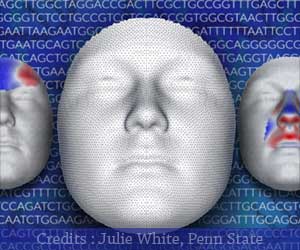The new study result contradicts our current understanding of gene regulation - the genetic code affects how often the proteins bind, but not for how long.

The protein production is regulated by DNA-binding proteins that have evolved the ability to turn different genes on or off. Because the environment can change quickly, rapid adaptation is key. The DNA-binding proteins must find the correct DNA code among millions of base pairs, and do so fast.
When DNA-binding proteins search the genetic code for their target sequence, they slide along the DNA helix to speed up the process. When they finally find the right spot, they stay there; the interaction with the "correct" sequence prevents them from sliding along.
This mechanism has been widely accepted to describe the search process. It is an appealing hypothesis, yes, but it presents an annoying problem that the DNA code is full of "almost correct" sequences.
If the time a protein resides on a particular DNA motif was determined by the sequence, the searching proteins would constantly linger on sequences that resembled their target.
"If the textbook explanation was correct, the DNA-binding proteins would get stuck all the time off target. Gene regulation would be very ineffective, but we know from previous studies that this is not the case. Our favorite protein, LacI, finds its target sequence among 4.6 million base pairs in a matter of minutes”, says Emil Marklund, one of the researchers behind the discovery.
Advertisement
A fluorescent molecule was attached to the LacI protein and made it possible to measure how fast LacI adhered to the different sequences and how quickly it was released. The result was striking.
Advertisement
The result shows that DNA-binding proteins bind often rather than protractedly, explains how LacI can slide on the DNA sequence in search of its target without getting held up unnecessarily.
LacI regulates the uptake of lactose in bacteria but is of course just an example. The hundreds of different transcription factors that regulate our genes likely act according to a similar principle.
Source-Medindia














